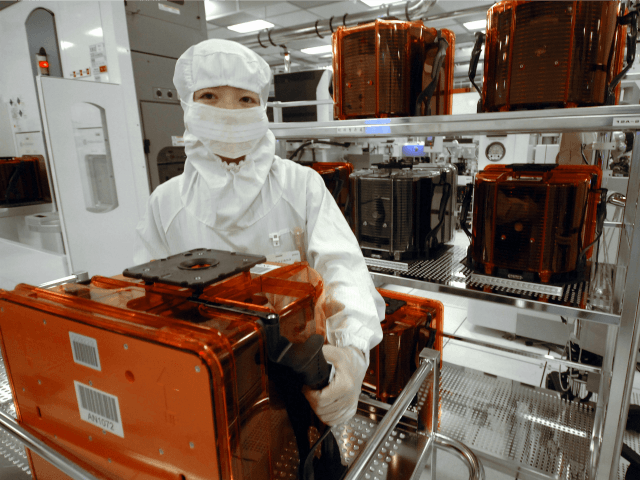U.S. Commerce Secretary Wilbur Ross warned on Thursday that China’s plan to build up its production of semiconductors is a threat to the national security and economic stability of the United States.
Ross told Reuters that his agency is considering a national security review of the chip-making industry as it relates to a 1962 trade law because the technology has “huge defense implications” and because the technology used in military hardware and in many devices used daily in the American economy.
“[Ross] has launched similar ‘Section 232′ reviews of the U.S. steel and aluminum sectors, where a flood of imports especially from China has depressed prices, threatening the industries’ long-term health,” Reuters reported, noting that both reviews could result in metal import restrictions.
“Semiconductors are one of our shining industries, but they have gone from substantial surplus to the beginnings of a deficit,” Ross told Reuters, which described the secretary as a “79-year-old billionaire.”
“China has a $150 billion program to take that much further between now and 2025,” Ross said. “That is scary.”
Reuters’ report also included the perspective of the semiconductor industry as stated by its trade group, Semiconductor Industry Association (SIA), which advocates open trade and increased access to international markets that now buys 80 percent of U.S.-made semiconductors and because of the domestic industry’s dependency on “a complex global supply chain.”
“So while we fully support efforts to ensure trade in semiconductors is fair and market-based, we do not believe a Section 232 investigation is the right tool to be applied to our industry,” SIA President John Neuffer told Reuters.
The semiconductor industry trade status is part of the debate.
“Commerce Department trade data showed that ‘Semiconductors and related device manufacturing’ had a trade deficit of $2.4 billion in 2016, with exports of $43.1 billion and imports of $45.6 billion,” Reuters reported, noting that the data also includes solar cells, LEDs, and some raw materials.
But that category includes rapidly growing imports of non-semiconductor devices, including solar cells and light-emitting diodes (LEDs) as well as some raw materials.
SIA argued that by excluding the non-semiconductor products shows the sector had a $6.4 billion trade surplus last year, with exports of $41.3 billion and imports of $34.9 billion, Reuters reported.
“Neuffer said the industry was ready to work with the Trump administration to find ways to persuade China to allow its semiconductor industry to develop in a market-driven way and not discriminate against foreign firms,” Reuters reported, adding that the group also backs tax reforms that would not penalize overseas earnings and immigration policies that allows for foreign-born workers to be hired.
“The Chinese are determined to build a semiconductor industry,” Neuffer said. “I think the strongest pillar of any strategy going forward has to be our government helping to create an environment where we can pedal faster and stay as far ahead as possible.”
In late February Fortune reported that China’s latest tech business plan follows the same strategy as it used to flood world markets with steel and solar panels.
“Computer chips power everything from phones and ‘smart’ devices to satellites and advanced weapon systems,” Fortune reported. “Half of the $340 billion in annual semi-conductor sales flows to U.S. tech giants such as Intel, Qualcomm, and Apple.
Fortune then cited the impended Chinese threat to the industry.
“According to a U.S. government report released in January, “Chinese policies are distorting markets in ways that undermine innovation, subtract from U.S. market share,” and, because of the chips’ uses in critical infrastructure, “put U.S. national security at risk.”
During his confirmation hearing Ross said he was “very, very concerned” about the Communist China plan to invest $150 billion to domestic semiconductor production from 2015 to 2025.

COMMENTS
Please let us know if you're having issues with commenting.